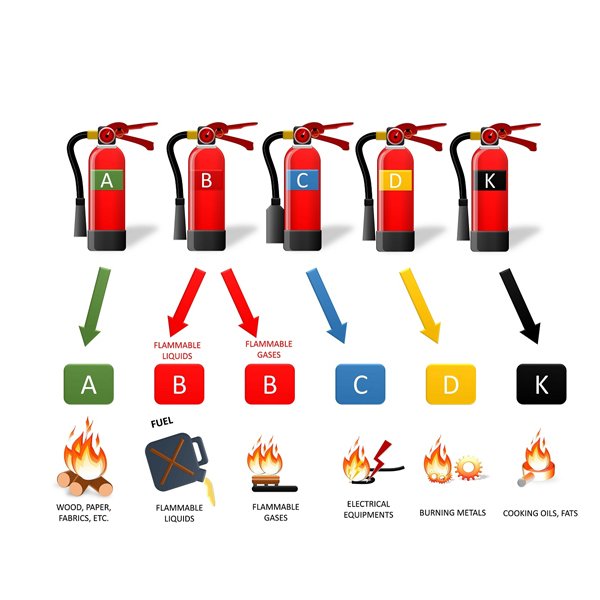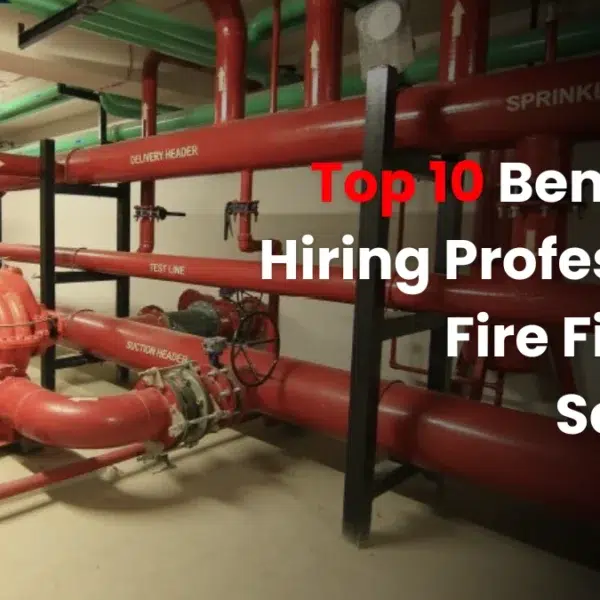A Guide to the Different Classes of Fire


A guide to the different classes of fire
Firstly, understanding about what are different classes of fire is important for safety. All fires are not the same, and utilizing the wrong extinguisher to extinguish any fire can make a very bad situation. So fire of any type depends on these six classes of fire, each must have a thorough process for safe extinguishing.
Stopping fires is essential to saving lives and businesses. About 60% to 70% of businesses never completely recover after a fire. So Having a strategy is most important for any fire emergency. Because fires can spread quickly and damage life of individuals, businesses, and establishments, so understanding how to tackle this situation is very important. Different fires can have different types of hazards and risks.
So here in this article, we will discuss the understanding of different types of fires and different risks and Using the right extinguisher and explore the different types of fire and different types of fire extinguishers which extinguishers are suitable for each.
What are the different classes of fire?
There are six different classes of fire which are:
- Class A – Combustible materials
- Class B – Flammable liquids
- Class C – Flammable gases
- Class D – Burning metals
- Electrical fires
- Class F – Cooking oils and fats
The Fire Safety Order 2005 requires premises to have suitable fire safety equipment based on their specific risks. For example, Class F fire extinguishers are suitable for any restaurant or kitchen fires, while an office doesn’t require F fire extinguishers.
A fire danger assessment allows for determining the most likely fire hazards, and ensuring the right safety steps are in establishment. Different establishments face different types of fire risks, each needing specific extinguishers.
Different types of fire extinguishers are:
Any type of fire requires a specific type of fire extinguisher. You can identify a perfect fire extinguisher by its title very fast. Here is the list of different classes of fire for different fire extinguishers:
- Water fire extinguisher – Class A
- Foam fire extinguisher – Class A and B
- Powder fire extinguisher – Class A, B, C and electrical fires (under 1000v)
- CO2 fire extinguisher – Class B and electrical fires
- L2 fire extinguisher – Class D
- Wet Chemical fire extinguisher – Class A and F
- MultiCHEM fire extinguisher – Class A, B, and F
- Water Mist fire extinguisher – Class A and F
Class A (combustible materials)
Class A fires generally arise when a flame or objects with high temperatures come into touch with combustible materials like paper, wood, or cardboard. Given the widespread use of such materials in different premises such as offices, schools, warehouses, and hospitals, the risk of Class A fires is general.
In response to this risk, several types of fire extinguishers are appropriate for combating Class A fires. These have water, foam, MultiCHEM, powder, wet chemicals, and water mist extinguishers. Each extinguisher is made to effectively stop fires with Class A materials, providing various alternatives for fire safety measures in various environments.
Class B (flammable liquids)
Class B fires happen when flammable liquids like petrol and spirits, are revealed to a start of ignition. These flammable liquids by design and quite explosive, if not kept safely.
Many locations, like restaurants, bars, garages, construction sites, laboratories, hospitals, and petrol forecourts, are at special risk of Class B fires and must maintain suitable fire extinguishers onsite and mandatory fire safety signage to emphasize the proper safety guidelines for everyone onsite.
Fire extinguishers best for Class B fires are MultiCHEM, CO2, foam, and powder.
Class C (flammable gases)
Fires concerning with flammable gases like propane and butane, as Class C. Flammable gases must be stored perfectly in sealed containers and only used by a qualified person.
Manufacturing and industrial warehouses, chemical plants, or anywhere that keep large excesses of flammable gases are at special risk of C types of Class fires.
Class C fires must use a powder fire extinguisher.
Class D (burning metals)
Class D fires happen when combustible metals like magnesium, lithium, and sodium, ignite and are more general in laboratories, warehouses, and metal fabricators.
So special fire extinguishers are the best to use on Class D fires, such as the L2 fire extinguisher.
Electrical fires
Electrical (Class E), fires are very dangerous to all premises which utilize electricity.
They happen when live electrical equipment is concerned in a fire and not be tackled by a liquid-based fire extinguisher. This is due to water being a conductor and will extend the current across the larger area if used, potentially risking the user of the fire extinguisher.
Because they do not depend on liquid matter, only powder (for electrical currents under 1000v) and CO2 fire extinguishers can be used in this situation.
Class F (cooking oils and fats)
Kitchens and dining establishments are exposed to Class F fires. Using a liquid-based extinguishing agent can greatly increase fires caused by cooking oils and fats.
Therefore, in environments where cooking oils and fats are used, specialist MultiCHEM, water mist, and wet chemical fire extinguishers are important.
Read our thorough guide to identifying fire extinguishers by coloring to see more about matching any type of fire to the appropriate extinguisher.
How to Use a Fire Extinguisher
If you have to use a fire extinguisher, then you must know and take extreme care and make sure you have an exciting way.
Keep a safe distance from the flames and set yourself with your back toward an exit route. Recognize to the PASS technique:
- Pull – Pull out the safety pin to prepare the fire extinguisher
- Aim – Aim at the base of the flames
- Squeeze – Squeeze the trigger firmly, evenly and slow
- Sweep – Sweep the spray from side to side across the base of the flames
If you have the proper training, you should never try to use a fire extinguisher.
Taking in a fire safety class is a must if you want to be completely ready for any disasters.
Why Fire Safety Training is Important
Fires can occur at any time, any place, and to anyone. They can be extremely risky.
If you run your own business, then you keep a legal obligation to confirm that your people obtain good fire training and that you have the proper fire extinguisher and signage. You may even be required to have fire guardians on site.
Fire Safety Courses will help you comply with fire-related fitness and protection legislation and save your business and your workers.
You can take these fire courses online at your comfort. Topics include fire awareness, fire risk assessments, fire door training and fire extinguisher use, fire safety assessment systems, and fire warden training, etc.
Keep Up with Testing and Maintenance
Remember, to regularly inspect your equipment and change or replace fire extinguishers when they expire. You will also schedule inspections with the local fire department to provide compliance with fire codes regarding your building’s protection plan, capacity, and alarms. Regardless of the fire class you’re training for, Damia Global Services offers the essential tools, technology, and expertise from safety training to system installation, testing, and maintenance, we’ve got you covered. Visit Damia Global Services to address all your fire safety requirements.
Conclusion
Understanding the different classes of fire and the right extinguishers for ensuring safety in any environment. Fire risks can have more impacts on lives and businesses, so it is crucial to have a well-thought-out plan for fire emergencies. Fire safety regulations and maintaining the right equipment in place, such as correctly held extinguishers and keeping with fire codes, the risk of fire-related damage can be mitigated.
Regular testing and maintenance of equipment are very important to ensure readiness for any possible fire crisis. With Damia Global Services, you can access the required tools, technology, and expertise to address all your fire safety requirements, from installation to testing and maintenance. Stay ready and prioritize fire safety to save lives and property effectively.
https://www.youtube.com/embed/cveuVXqrYq4https://www.youtube.com/embed/vouWAx-VWhghttps://www.youtube.com/embed/aMi7iXD0l9I



